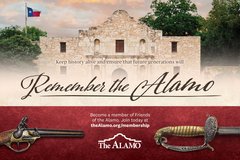During excavations of a unit on the south side of the Church, archaeologists encountered quite a few fragments of cut animal bones. These fragments show signs of being processed using a saw to cut the bones.
Prior to the arrival of the Spanish in San Antonio, and during the early portion of the mission period, much of the animal bone being processed for food were cut with knives using a “hacking” technique.
The knives would leave scars on the bone as well as uneven breaks. The use of butcher saws was common by the end of the mission period and throughout the remainder of the historic use of the site. The characteristics of the saw cut bone include the sharp edge of the cut and striation marks left on the bone from the saw.
These pictures show the saw cut edge of a large bone, likely from a cow, as well as smaller bones that likely represent cuts of meat like a ham steak. The smaller bone has visible evidence of the striation marks left by the saw.
Saw cut bone allows the archaeologists to record the different butchering methods used over the occupation of the site, as well as make inferences concerning the diets of the inhabitants.



